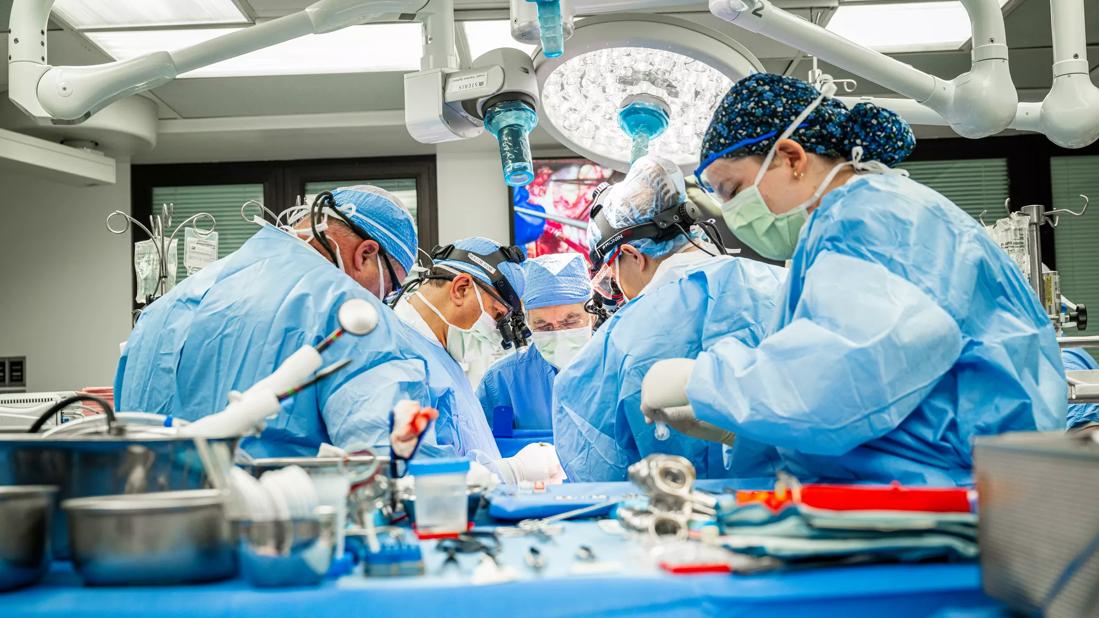VADs remain underutilized in non-dilated cardiomyopathy patients

A recent study found that waitlist and post-transplant survival rates in pediatric patients with non-dilated cardiomyopathy (DCM) phenotypes [hypertrophic cardiomyopathy (HCM) and restrictive cardiomyopathy (RCM)] are now similar to those with DCM.
Advertisement
Cleveland Clinic is a non-profit academic medical center. Advertising on our site helps support our mission. We do not endorse non-Cleveland Clinic products or services. Policy
“We were able to show that, nationally, post-transplant survival has improved around 82% in children with HCM and 75% in those with RCM between 1999 and 2018,” says Shahnawaz Amdani, MD, a pediatric heart failure and transplant cardiologist at Cleveland Clinic Children’s and first author of the study published in the Annals of Thoracic Surgery. “I think that’s something we need to celebrate.”
The news about waitlist survival in non-DCM was mixed, improving around 67% in children with HCM, but not in RCM. “Clearly, there is work to be done,” he adds.
The United Network for Organ Sharing (UNOS) grants the highest priority (Status 1A) to patients with a ventricular assist device (VAD). But due to anatomical differences between DCM and non-DCM, VADs are not utilized equally across the cardiomyopathy phenotypes.
“Given that hearts with DCM have bigger ventricles, it is technically easier to implant a VAD in children with DCM. Consequently, the majority of VADs are implanted in children with DCM in advanced heart failure,” says Dr. Amdani.
“Historically, VAD implantation in patients with HCM and RCM has been extremely technically challenging, and managing these patients on a VAD has been difficult. This is because their ventricles are smaller and thicker. Hence, these patients typically do not receive VADs and, therefore, are unable to achieve the highest urgency listing (Status 1A). Hence, they end up waiting longer and getting transplanted at a lower rate than children with DCM,” he explains.
Advertisement
This motivated Dr. Amdani and his colleagues to explore whether waitlist and post-transplant outcomes in this cohort of children with non-DCM have improved over time.
To conduct their study, the researchers tapped the Scientific Registry of Transplant Recipients for patients under age 18 with cardiomyopathy listed for heart-only transplantation. The cohort of 4,159 was divided into three eras:
They found that VAD use in pediatric patients with cardiomyopathy grew steadily over time, particularly in DCM patients. However, VAD use in non-DCM patients remained low: Only around 3% of HCM patients and 2% of RCM patients received a VAD during the study period.
Their analysis also showed that non-DCM patients who received a VAD were more likely to be on mechanical ventilation and listed with the highest urgency.
“This tells me that they were receiving a VAD much later,” he says.
Nevertheless, they found no significant difference in waitlist morality between patients with DCM and HCM, after adjusting for risk factors. “Although the numbers are limited, this shows that patients with non-DCM can be successfully supported with a VAD,” he says.
If a VAD does not necessarily increase mortality, then what does?
Through multivariable analysis, the researchers were able to identify the following risk factors specific to non-DCM that increase the risk of waitlist mortality:
Advertisement
“These are the patients for whom clinicians should consider requesting a Status 1A exception, given the increased risk for mortality if they wait longer to get a heart,” says Dr. Amdani. “Also, it is important to highlight that if children with non-DCM receive a VAD preemptively, before advanced end-organ dysfunction sets in or they are in extremis, a reasonable outcome may be achieved.”
Advertisement
Advertisement

Retrospective study examines outcomes associated with common treatment pathways

Survival is improving, but the youngest patients still face disproportionate risk

Large, multinational trial finds no significant difference in vigorous versus nonvigorous exercise

Program will support family-centered congenital heart disease care and staff educational opportunities

Largest outcomes analysis in children with CHD undergoing VAD implantation

Results from a large registry study provide an updated picture of recurrent rejection

Study explores center volume and outcomes using the STS-Pedimacs database

Pre and post-surgical CEEG in infants undergoing congenital heart surgery offers the potential for minimizing long-term neurodevelopmental injury